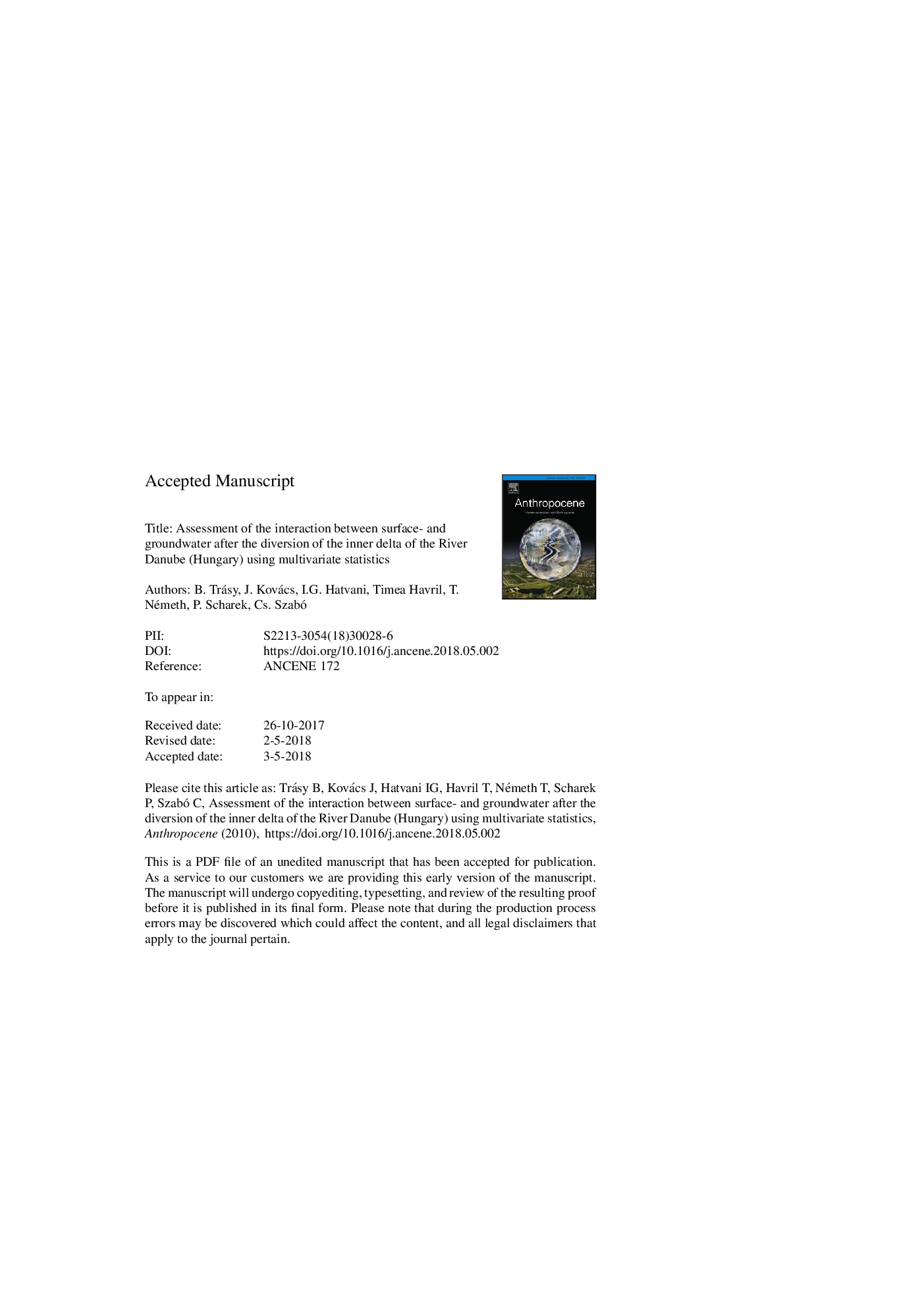| Article ID | Journal | Published Year | Pages | File Type |
|---|---|---|---|---|
| 8867170 | Anthropocene | 2018 | 43 Pages |
Abstract
Anthropogenic activity such as damming or diversion of rivers cause extensive disturbance to ecosystems, as well as the interaction between surface water and groundwater. Following the diversion in 1992 of the River Danube (NW Hungary) and the construction of a water barrage system, the level of shallow groundwater dropped and altered the connection between surface water and groundwater. This paper outlines the changes in the interaction of surface water and shallow groundwater and other related environmental consequences caused by an 80% decrease in runoff resulting from this intervention. Time series (1996-2004) of 27 water quality variables measured from three surface- and three subsurface sampling sites were analyzed using periodicity-, hierarchical cluster- and principal component analyses. It was found that: (i) the degree of riverbed clogging increased due to diminished runoff; this clogging blocked the interaction between surface water and groundwater at certain sampling sites; (ii) extreme floods were capable of resetting this situation and changing the flow currents to differing degrees in the surface/groundwaters. These findings enabled a better understanding of the changes in water quality primarily attributable to the diversion of the river (the change in water level, riverbed clogging etc.). The changed hydrological setting of the subject area became very similar to that which might be expected to evolve due to climate change around the world. Thus, the study not only serves as an example for the processes evolving (e.g. riverbed clogging) in similarly modified river sections, but to those as well, which are expected to suffer from aridification.
Related Topics
Physical Sciences and Engineering
Earth and Planetary Sciences
Atmospheric Science
Authors
B. Trásy, J. Kovács, I.G. Hatvani, T. Havril, T. Németh, P. Scharek, Cs. Szabó,
